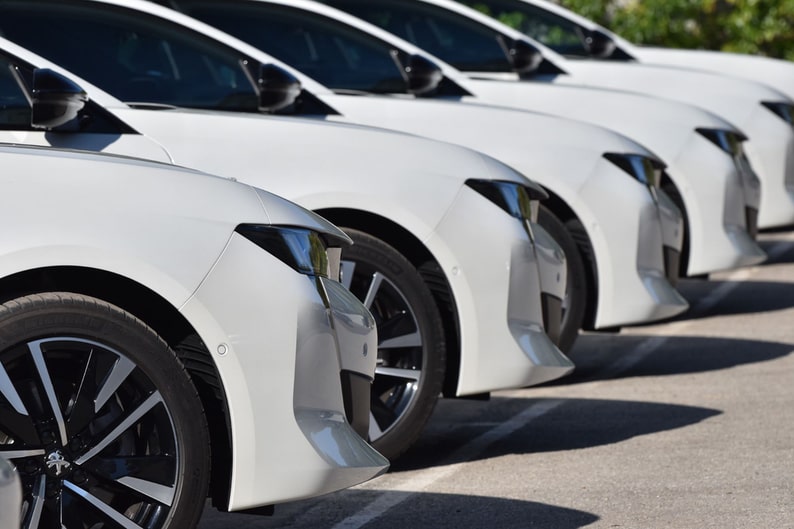How Many Years Will an Electric Car Last?

EVs Can Last Longer Than Gas Cars! Here’s How.
With gas prices rising to unprecedented levels, and the coronavirus-induced car shortage finally behind us, many are wondering whether now is the time to consider purchasing an electric vehicle. Indeed, annual EV sales in the US have tripled over the last five years, so it’s clear their popularity isn’t going away.
But there’s one question many car buyers may have on their tongues: how many years do electric vehicles last? Purchasing an electric vehicle is an investment in lower bills and a cleaner future, and you’ll want to be sure that this investment lasts.
It may surprise you to learn that electric vehicles may already be longer-lasting than their combustion-based cousins. The average gas car’s age has increased from five to twelve years during the past five decades, but combustion-vehicle technology is not going to improve much more. Meanwhile, EVs are already required to last at least eight years, with lifespans averaging about 10-15 years, and the industry is just getting started. The longest range electric car in 2021 was a car with a range of 520 miles, with just one charge. Current EV-focused automakers are working on batteries that could last a million miles!
Here’s why EVs have the components for long lifespans, and how to make the most of your EV:
Electric Cars Have Fewer, Simpler Components
The main difference between cars that are green and cars that need gasoline is in their engines: electric motors typically have just one moving part, instead of the literally hundreds that exist in a gas-powered vehicle, each of which can break. With battery-powered vehicles, you can say goodbye to oil changes, transmission issues, spark-plug replacements, and more!
Of course, you’ll still need to maintain your tires, service the brakes, change out coolant, and so forth, but the only new concern should be the electric car battery life. As it turns out, batteries aren’t much of a longevity concern anymore.
EV Battery Lifespans Are The Most Important Part
An electric car battery can be quite costly to replace, and we all notice our phones losing their capacity to hold a charge after just a few years of use. It is important to look at the electric car maintenance cost in order to prevent battery replacement. Breakthroughs in battery technology have made this the last aspect of your car worth worrying about.
Importantly, federal rules require an EV manufacturer to provide warranties on battery life and electric motors for eight years or 100,000 miles, and some states go even farther. Back in 2010, Prius batteries often began to have battery degradation around that mark, but now Tesla expects its Model S cars to maintain 90% of their total battery capacity after 150,000 miles, with Nissan Leafs and BMW i3s putting up similar numbers.
Why Battery Lifespans Are Increasing: It’s Science!
The increased longevity of EV batteries has come from several improvements. First, the industry switched from nickel metal hydride to lithium ion batteries, the cost of which per unit of energy has fallen by 85% in real terms since 2010. This has allowed more fuel cells to be combined into modules, which are then combined into battery packs; in the event of damage, only individual modules need to be replaced, rather than whole packs.
Further, automakers now add excess capacity to battery pack, which can absorb some of the wear and tear without reducing energy storage or vehicular performance.
General Motors and Tesla are each rumored to be developing new battery chemistries that will be able to last one million miles!
How to Make the Most of Your Battery: A Few Tips
Avoid Charging in Extreme Temperatures
Battery maintenance technologies and practices have improved to make better use of already available technologies. For example, fuel cell storage capacity can be permanently degraded by lengthy exposure to high temperatures. Therefore, EV owners are encouraged to avoid regularly parking in the sun in weather warmer than 85 degrees Fahrenheit, and to change their coolant every 100,000 miles. Similarly, chilly weather temporarily weakens battery power, but extreme cold can completely crack fuel cells.
Charge Responsibly
Try to avoid regularly filling all the way up, or draining all the way down: the closer your charge is to 50%, the less hard your battery has to work at balancing ions between its anode and its cathode. However, don’t worry too much about this, since EV software already prevents you from filling up above 90% of battery capacity, and tells you that you’re empty once you reach 10%; avoiding those extremes yields most of the relevant benefits to battery longevity and battery health.
Use a Level 2 Charger
Most importantly, EV owners are encouraged to limit their use of DC rapid charging to special occasions like road trips, because this can overheat their batteries. Using a Level 2 home charger like the JuiceBox is much better for your battery, and you can juice up overnight while you sleep and travel hundreds of miles on a single charge.
The Future of Battery Breakthroughs
Batteries have been improving at a roughly constant rate for decades, in terms of both price per watt-hour and watt-hour per kilogram. It doesn’t seem like the breakthroughs are likely to slow down: lithium iron phosphate and lithium sulfur battery improvements are currently being tested by companies like Tesla, and the tests seem quite promising. Researchers are doing what they can to make batteries last, meaning EV lifespans are sure to outpace gas-powered cars.
So what are you waiting for? Get ready to charge your electric vehicle battery responsibly and make your EV last with a high-quality Level 2 charger today!


